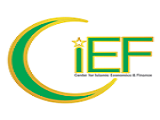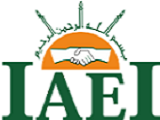Creative Economic Development Strategy of Riau Province Community in As-Syatibi Shariah Maqasid Persfective
Abstract
Creative economy is an effort to optimize natural resources with creativity and innovation so as to produce the unique products, unique and renewable in an effort to increase capacity building of local human resources. This study aims to analyze the strategy of developing the creative economy of the people of Riau province and the views of maqasid shariah. ANP analysis shows that there are two criteria for problems and solutions in creative economy development, namely internal problems and external problems. The results of this study indicate that the creative economy development strategy of the people of Riau province is still not optimal, marked by various problems that exist in the creative economy development strategy carried out by the Riau regional government. External problems dominate, namely government policies, participation of related institutions, participation and support from public awareness.
Keywords
Full Text:
PDFReferences
Aifan, Muhammad Abu, (1985) Min Atsar Fuqaha Al Andalus fatawa Al Imam Asy Syatibi, Tunis: Matba’ah al Kawakib
Ascarya. (2005). Analytic Network Process (ANP): Pendekatan Baru Studi Kualitatif. Seminar Intern Program Magister Akuntansi Fakultas Ekonomi Di Universitas Trisakti.
Asy Syatibi, Al Muwafaqat fi Ushuli Asy Syariah, (Kairo: Mustafa Muhammad, t.th). Jilid I
Badan Pusat Statistic Provinsi Riau, Produk Domestik Regional Brutto Provinsi Riau Menurut lapangan Usaha 2016-2020, Riau: BPS, 2020.
Chapra, U. (1999), Islam Dan Tantangan Ekonomi (Islamisasi Ekonomi Kontemporer), Surabaya: Risalah Gusti
Chapra, U. (2016). Masa Depan Ilmu Ekonomi; Sebuah Tinjauan Islam. Gema Insani, Jakarta.
Chen, M. H., & Tseng, M. (2021). Creative entrepreneurs’ artistic creativity and entrepreneurial alertness: the guanxi network perspective. International Journal of Entrepreneurial Behaviour and Research, 27(4). https://doi.org/10.1108/IJEBR-05-2020-0306
Das, S. (2016). The Rise of the Creative Class: Revisited. African Journal of Science, Technology, Innovation and Development, 8(5–6). https://doi.org/10.1080/20421338.2016.1256596
Evans, G. (2009). From cultural quarters to creative city economy clusters – creative spaces in the new city economy. The Sustainability and Development of Cultural Quarters: International Perspectives.
Fazlagić, J., & Szczepankiewicz, E. I. (2020). The role of local governments in supporting creative industries-a conceptual model. Sustainability (Switzerland), 12(1). https://doi.org/10.3390/SU12010438
Ghazinoory, S. S., Tatina, S., & Goodarzi, M. (2020). Innovation policy-making in the upstream oil and gas industry as a large technical system under economic transition. Journal of Science and Technology Policy Management, 11(1). https://doi.org/10.1108/JSTPM-07-2018-0074
Hallett, D. J., Wheelen, T. L., & Hunger, J. D. (1990). Strategic Management and Business Policy (3rd Edition). The Journal of the Operational Research Society, 41(1). https://doi.org/10.2307/2582945
Lindberg, M., & Schiffbaenker, H. (2020). Gender and Innovation. In Encyclopedia of Creativity, Invention, Innovation and Entrepreneurship. https://doi.org/10.1007/978-3-319-15347-6_454
Mansoori, M. T. (2022). General Principles of Business Contracts in Islamic Law. In Institutional Islamic Economics and Finance. https://doi.org/10.4324/9781003227649-3
Mudradjad Kuncoro, Visi Indonesia 2030: Quo Vadis, FE UGM
Pauzi, & Aziwantoro, J. (2019). Nilai-Nilai Kearifan Lokal (Gurindam Dua Belas). In STAIN SULTAN ABDURRAHMAN PRESS.
Purnomo, R. A. (2016). Ekonomi Kreatif Pilar Pembangunan Indonesia. In Yayasan Kita Menulis (Vol. 53, Issue 9).
Qardhawi, Y. (1997). Norma dan Etika Ekonomi Islam, terj Zainal Arifin. In Gema Insani.
Rusydiana, A. S., & Devi, A. (2017). Development Strategy of Microtakaful Institutions: Case Study Working Group Indonesia. ETIKONOMI, 16(2). https://doi.org/10.15408/etk.v16i2.5267
Sutrisno, S., & Anitasari, H. (2020). Strategi Penguatan Ekonomi Kreatif Dengan Identifikasi Penta Helix Di Kabupaten Bojonegoro. Jurnal Ilmiah Administrasi Bisnis Dan Inovasi, 3(2). https://doi.org/10.25139/jai.v3i2.1986
Winarno, B. (2007). Kebijakan Publik (Teori, Proses, dan Studi Kasus). Handbook of Public Policy.
DOI: http://dx.doi.org/10.24042/febi.v6i2.11639
Refbacks
- There are currently no refbacks.
Copyright (c) 2021
Ikonomika : Jurnal Ekonomi dan Bisnis Islam is a Journal of Islamic Economics and Business, Published by the Faculty of Islamic Economics and Business at UIN Raden Intan Lampung Indonesia. This work is licensed under a Creative Commons Attribution-ShareAlike 4.0 International License.






11.png)


